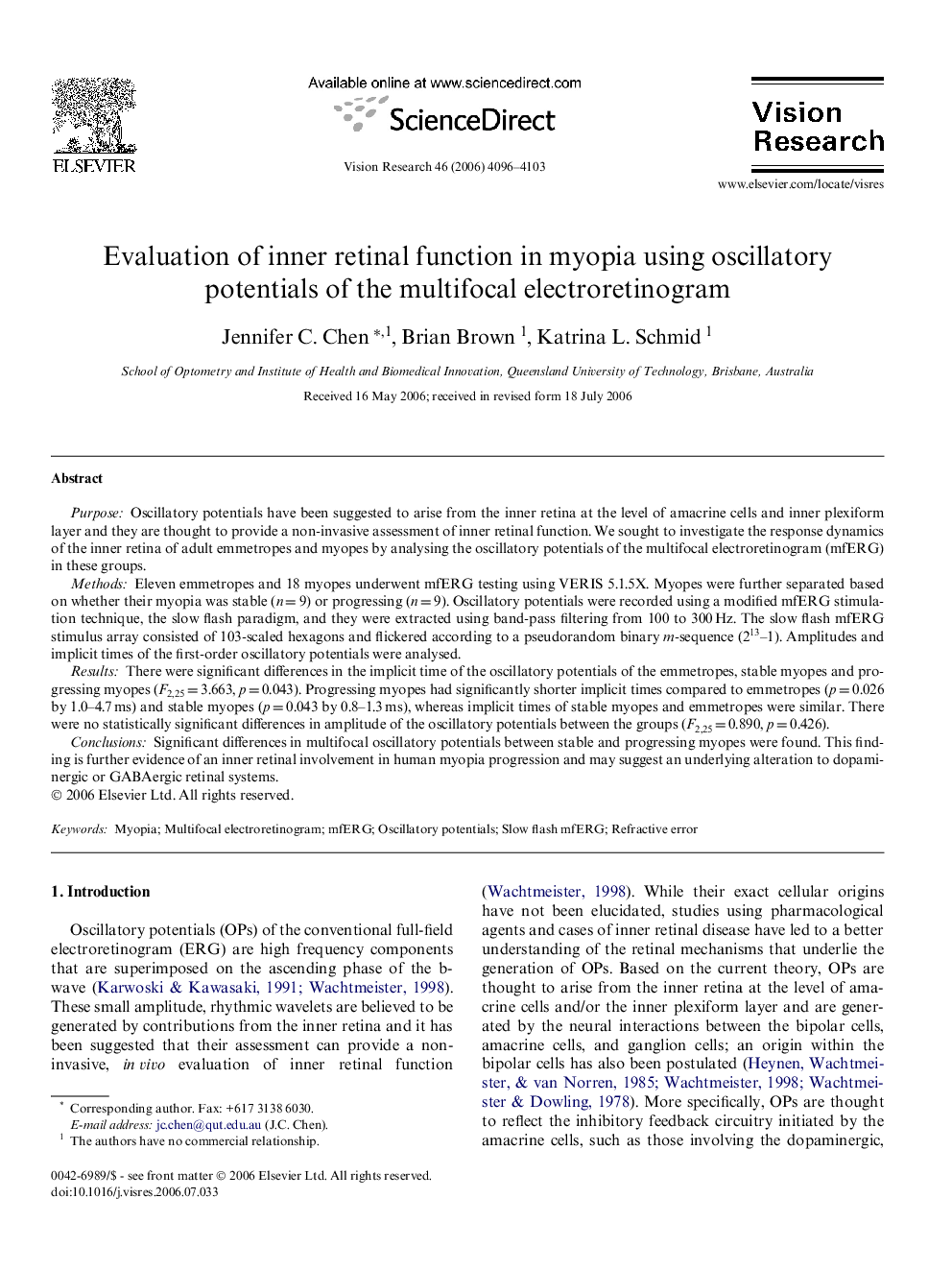| Article ID | Journal | Published Year | Pages | File Type |
|---|---|---|---|---|
| 4035909 | Vision Research | 2006 | 8 Pages |
PurposeOscillatory potentials have been suggested to arise from the inner retina at the level of amacrine cells and inner plexiform layer and they are thought to provide a non-invasive assessment of inner retinal function. We sought to investigate the response dynamics of the inner retina of adult emmetropes and myopes by analysing the oscillatory potentials of the multifocal electroretinogram (mfERG) in these groups.MethodsEleven emmetropes and 18 myopes underwent mfERG testing using VERIS 5.1.5X. Myopes were further separated based on whether their myopia was stable (n = 9) or progressing (n = 9). Oscillatory potentials were recorded using a modified mfERG stimulation technique, the slow flash paradigm, and they were extracted using band-pass filtering from 100 to 300 Hz. The slow flash mfERG stimulus array consisted of 103-scaled hexagons and flickered according to a pseudorandom binary m-sequence (213–1). Amplitudes and implicit times of the first-order oscillatory potentials were analysed.ResultsThere were significant differences in the implicit time of the oscillatory potentials of the emmetropes, stable myopes and progressing myopes (F2,25 = 3.663, p = 0.043). Progressing myopes had significantly shorter implicit times compared to emmetropes (p = 0.026 by 1.0–4.7 ms) and stable myopes (p = 0.043 by 0.8–1.3 ms), whereas implicit times of stable myopes and emmetropes were similar. There were no statistically significant differences in amplitude of the oscillatory potentials between the groups (F2,25 = 0.890, p = 0.426).ConclusionsSignificant differences in multifocal oscillatory potentials between stable and progressing myopes were found. This finding is further evidence of an inner retinal involvement in human myopia progression and may suggest an underlying alteration to dopaminergic or GABAergic retinal systems.
